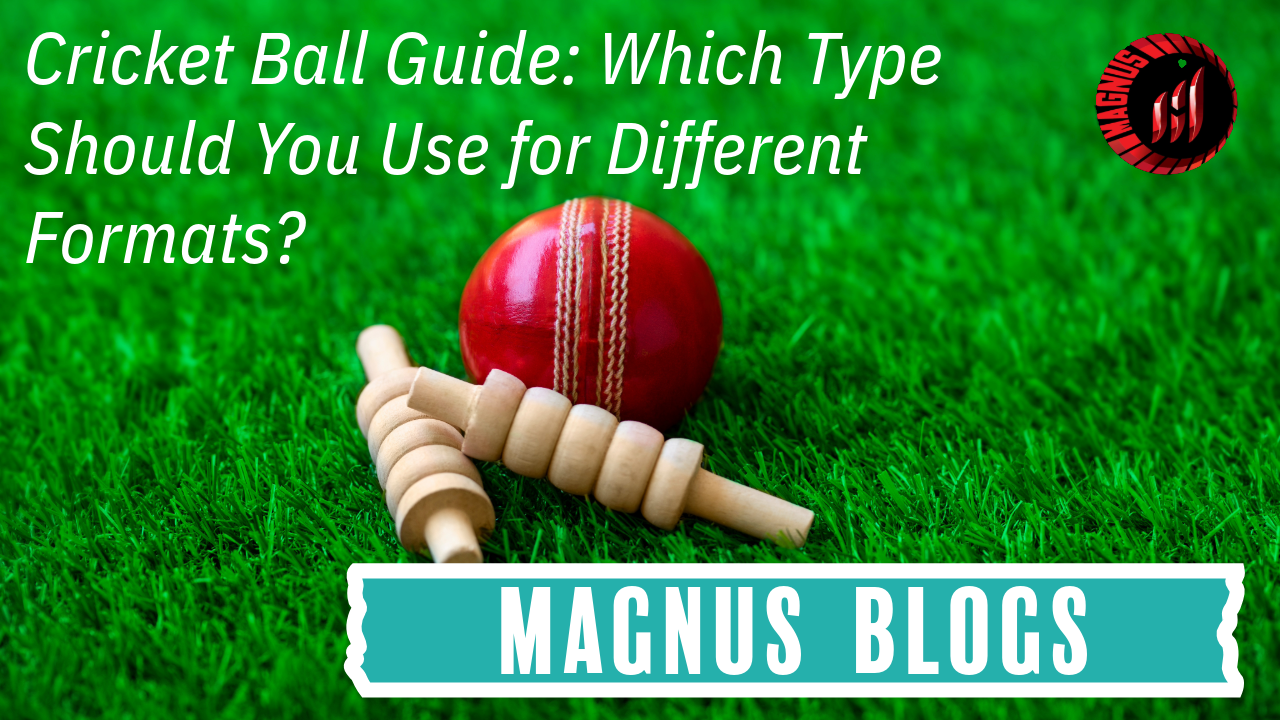Cricket balls play a crucial role in the game, affecting swing, bounce, and overall match dynamics. While they may look similar, different types of cricket balls are designed for different formats and conditions. Choosing the right ball can impact both performance and durability.
In this guide, we’ll explore the various types of cricket balls used in Test matches, ODIs, T20s, and practice sessions—helping you understand which one suits your game best.
1. Types of Cricket Balls Based on Manufacturers
Three major brands manufacture cricket balls for professional matches:
1.1 Dukes (Used in England & West Indies)
- Features: Handmade, darker red color, pronounced seam, harder leather.
- Performance: Offers more swing and seam movement, lasting longer in overcast and humid conditions.
- Best for: Test matches in England and the West Indies, where the ball retains shape longer and supports seamers.
1.2 Kookaburra (Used in Australia, South Africa & Other Countries)
- Features: Machine-stitched, lighter red color, flatter seam, softer leather.
- Performance: Loses shine quicker, but maintains consistency for both pace and spin.
- Best for: Test, ODI, and T20 matches in Australia, South Africa, and most other cricketing nations.
1.3 SG (Used in India)
- Features: Handmade, thick seam, slightly rougher texture, darker red color.
- Performance: Assists spinners due to the prominent seam and longer-lasting rough surface.
- Best for: Test cricket in India, favoring spinners over long spells.
2. Cricket Balls for Different Formats
Different cricket formats require balls that cater to varying levels of durability, visibility, and behavior.
2.1 Test Cricket – Red Ball
- Color: Deep red
- Why? Red balls are used in Tests because they retain their shape and hardness longer.
-
Performance:
- Offers significant swing movement in the first 20-30 overs.
- Helps fast bowlers with reverse swing after 50+ overs.
- Spinners benefit from the roughened-up surface over time.
- Best Choice: Dukes (England), Kookaburra (Australia), SG (India)
2.2 One Day Internationals (ODIs) – White Ball
- Color: White
- Why? White balls are easier to see under floodlights and during day-night games.
-
Performance:
- Swings significantly in the first 10 overs but loses movement quickly.
- Retains a hard surface for power-hitting in the middle and death overs.
- Becomes softer after 30 overs, making stroke play easier.
- Best Choice: Kookaburra White Ball (officially used in all ODIs worldwide).
2.3 T20 Matches – White Ball
- Color: White
- Why? Like ODIs, white balls provide better visibility under lights and in fast-paced games.
-
Performance:
- Moves around for only the first few overs, favoring aggressive batting later.
- Slightly tougher than ODI balls to withstand power-hitting.
- Bowlers rely on variations (slower balls, cutters, yorkers) rather than swing.
- Best Choice: Kookaburra White Ball (used in all international T20s and IPL games).
2.4 Pink Ball (Used for Day-Night Test Matches)
- Color: Pink
- Why? Red balls are hard to see under floodlights, so pink balls were introduced for day-night Tests.
-
Performance:
- Swings more than a red ball due to its lacquer coating.
- Retains hardness for a longer period, aiding both fast bowlers and spinners.
- Harder seam offers more assistance to pacers under lights.
- Best Choice: Kookaburra Pink, SG Pink, or Dukes Pink Ball (depending on the host country).
3. Practice Cricket Balls
Apart from match balls, different types of practice balls are used for training sessions.
3.1 Synthetic Cricket Balls
- Material: Made from rubber or plastic.
- Purpose: Used for net practice and beginner training.
- Best For: Street cricket, school practice, or areas without proper turf pitches.
3.2 Tennis Balls (With Tape or Without Tape)
- Material: Lightweight rubber with a fuzzy texture.
-
Variants:
- Normal Tennis Ball – Used for casual backyard cricket.
- Tennis Ball with Tape – Used to mimic seam movement for practice.
- Best For: Playing on hard surfaces like concrete or indoors.
3.3 Training Balls (Weighted or Swing Balls)
- Weighted Ball: Helps batsmen practice against heavy deliveries and improve strength.
- Swing Ball: Has an aerodynamic design to help bowlers understand swing movement.
- Best For: Skill improvement for both batsmen and bowlers.
4. How to Choose the Right Ball for Your Game
Here’s a quick breakdown of which cricket ball to use based on your needs:
| Scenario | Recommended Ball Type |
|---|---|
| Test Matches | Red Ball (Dukes, SG, Kookaburra) |
| ODIs | White Ball (Kookaburra) |
| T20 Matches | White Ball (Kookaburra) |
| Day-Night Test Matches | Pink Ball (SG, Dukes, Kookaburra) |
| Street Cricket | Tennis Ball (With or Without Tape) |
| Net Practice | Synthetic or Training Balls |
| Swing Bowling Practice | Swing Training Ball |
Cricket bat types, Cricket equipment in usa, Cricket equipment store, Cricket gloves, Cricket helmet, Cricket kit bags, Cricket retailers, Durable cricket gloves, English willow bats, Icc approved helmets., Kashmir willow cricket bat, Latest kashmir willow bat
